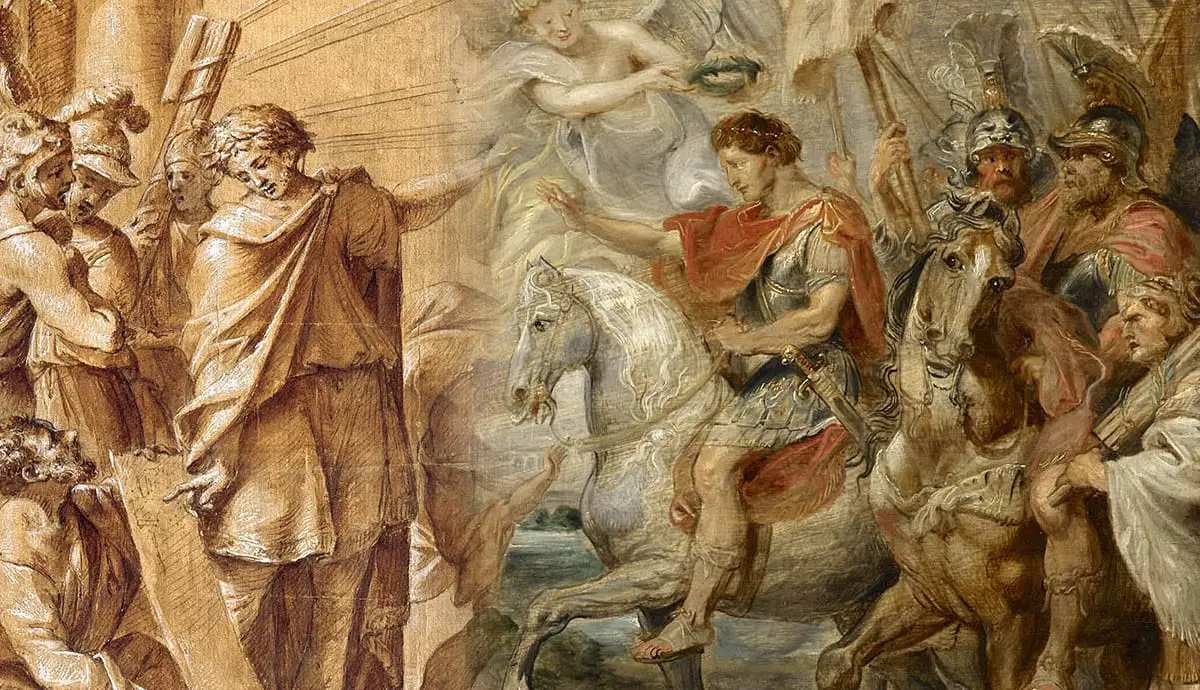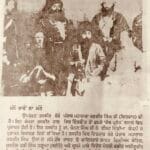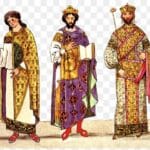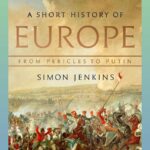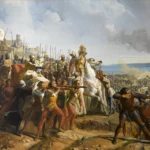Step back in time to the 10th century, a period marked by both turmoil and transformation in Europe. Amidst this backdrop, powerful rulers emerged, leaving indelible marks on history. These weren’t mere kings; they were emperors who forged empires, propagated religions, and shaped the destinies of civilizations. Among them, Otto the Great stands out as a figure of immense influence, his reign a testament to ambition, military prowess, and unwavering faith. Join us as we delve into the extraordinary life of Otto the Great and explore the enduring legacy he left behind.
The Enduring Reign of Great 10th Century Emperors
The 10th century witnessed the rise of exceptional emperors who left an undeniable mark on their respective regions. Otto I, later known as Otto the Great, stands as a prime example. Beginning his reign as the Duke of Saxony, he harbored ambitions far beyond his duchy. Through strategic alliances and military campaigns, Otto expanded his influence, eventually consolidating power over the fractured German kingdoms. His authority reached its zenith in 962 when he was crowned Holy Roman Emperor by Pope John XII, signifying a powerful union of secular and religious authority. This momentous event established him as the most influential ruler in Western Europe, solidifying his legacy as a pivotal figure in shaping the political landscape of the time.
In the East, another emperor was making history. Vladimir the Great, the Grand Prince of Kievan Rus’, was a warrior king who expanded his realm through military might. Yet, his reign extended beyond conquests. Recognizing the unifying power of faith, Vladimir strategically embraced Christianity as the official religion of Kievan Rus’ in 988. This pivotal decision profoundly impacted the future of Russia, shaping its culture, identity, and spiritual life for centuries to come. Under his rule, Kiev flourished as a vibrant hub of trade, scholarship, and cultural exchange, solidifying its position as a leading center in Eastern Europe.
The 10th century witnessed the rise of other notable emperors who shaped their regions and left lasting legacies. Romanos I, the Byzantine Emperor, strengthened his empire’s defenses, even expanding its frontiers. His reign saw a period of Byzantine resurgence, reinforcing the empire’s position as a dominant force in the Mediterranean. Meanwhile, in the Umayyad Caliphate of Cordoba, Al-Hakam II ushered in a golden age of culture and scholarship. Under his patronage, Cordoba flourished as a beacon of knowledge in the Islamic world, its libraries and universities attracting scholars from far and wide. These emperors, each in their own right, exemplify the profound impact that visionary leadership had on shaping the course of history during the 10th century.
Who Was Otto the Great?
Otto the Great’s path to becoming one of the most influential figures of the 10th century was one of ambition, strategic brilliance, and unwavering determination. He was not born an emperor; he rose to power through his own merit. Inheriting the Duchy of Saxony in 936, Otto quickly proved himself to be a capable and ambitious ruler. He skillfully quelled rebellions within the German kingdoms, asserting his authority and consolidating his power base. His leadership qualities, characterized by a blend of charisma and decisiveness, earned him the respect of his subjects and instilled fear in his enemies.
By 962, Otto’s influence had extended far beyond Saxony. His military successes, coupled with his shrewd political maneuvering, had cemented his position as the dominant force in the German territories. Recognizing the strategic importance of aligning secular and religious authority, Otto cultivated a close relationship with the Church. This strategic alliance culminated in his coronation as Holy Roman Emperor by Pope John XII, a testament to Otto’s political acumen and the growing influence of the Holy Roman Empire.
Otto’s reign was marked by significant military achievements that expanded the empire’s borders and solidified its position as a major power in Europe. He understood that true power rested not only in political influence but also in military strength. Perhaps his most resounding victory came in 955 at the Battle of Lechfeld, where his forces decisively defeated the Magyars, a nomadic group that had been raiding and terrorizing Western Europe for decades. This triumph not only secured the empire’s eastern borders but also established Otto as a military leader of great renown.
The Reign of Otto the Great: From Duke to Holy Roman Emperor
Otto’s journey from Duke of Saxony to Holy Roman Emperor is a testament to his political acumen, military prowess, and understanding of the interplay between secular and religious authority in 10th-century Europe. Inheriting the Duchy of Saxony in 936, Otto quickly established himself as a force to be reckoned with. He effectively suppressed rebellions within the German duchies, demonstrating his military capabilities and consolidating his power. His strategic vision extended beyond merely quelling internal strife; he sought to unite the fractured German kingdoms under his rule, a vision that would ultimately lead to the establishment of the Holy Roman Empire.
Otto’s rise to power coincided with a period of instability and change within the Church. Recognizing the importance of a strong religious authority, Otto strategically intervened in papal affairs, leveraging his influence to appoint loyal supporters to key positions within the Church hierarchy. This move, while controversial, allowed him to exert significant control over religious matters and solidify the relationship between the crown and the Church. In 962, his efforts culminated in his coronation as Holy Roman Emperor by Pope John XII in Rome. This momentous event marked not only the pinnacle of Otto’s political career but also a turning point in European history, solidifying the union of Germanic power with the legacy of the Roman Empire.
Beyond his political and religious reforms, Otto’s reign witnessed a period of relative peace and prosperity, a period often referred to as the “Ottonian Renaissance.” This era saw a resurgence in art, architecture, and learning, much of it inspired by the cultural influence of the Byzantine Empire. Otto’s patronage of the arts and sciences fostered a period of cultural flourishing, leaving a lasting impact on the artistic and intellectual landscape of Europe. His reign laid the groundwork for a more unified and influential Holy Roman Empire, shaping the destiny of Europe for centuries to come.
Otto the Great’s Impact on Europe: Religion, Culture, and Politics
Otto the Great’s impact on Europe extended far beyond his military conquests and political reforms. He played a pivotal role in shaping the religious landscape, fostering a cultural revival, and laying the groundwork for a powerful and influential empire. Otto understood the importance of religion as a unifying force in a fragmented Europe. He recognized the Catholic Church’s influence and strategically strengthened ties with the papacy, using this alliance to consolidate his power and legitimize his rule.
Otto’s close relationship with the Church had a profound impact on religious life in Europe. One of his most significant contributions was his active involvement in Church affairs, even intervening in papal elections to ensure the appointment of reform-minded popes who supported his vision. This close relationship between the Church and the state, often referred to as “Ottonian papacy,” had a lasting impact on the power dynamics within the Church and the role of the Holy Roman Emperor in religious matters.
Otto’s reign also marked a period of cultural flourishing, often referred to as the “Ottonian Renaissance.” This period saw a resurgence of interest in classical art, architecture, and learning, largely influenced by the Byzantine Empire. Otto’s court became a center for artistic patronage, attracting talented artists, architects, and scholars from across Europe. The construction of magnificent cathedrals, such as the ones in Magdeburg and Quedlinburg, exemplified the architectural achievements of this era, leaving an enduring legacy of Ottonian influence on European art and architecture.
In conclusion, Otto the Great’s reign was a pivotal period in European history. He transformed the political landscape, leaving an enduring legacy that extended far beyond his lifetime. His ambition, military prowess, and strategic alliances shaped the course of the Holy Roman Empire, solidifying its position as a major power in Europe. Otto’s reign reminds us of the profound impact that a single individual can have on shaping the course of history, leaving an indelible mark on religion, culture, and politics for generations to come.
For an insight into a leader who aimed to conquer the world, delve into the extraordinary life of Justinian, arguably the greatest 10th-century emperor.
- Unlock Water’s Symbolism: A Cross-Cultural Exploration - April 20, 2025
- Identify Black and White Snakes: Venomous or Harmless? - April 20, 2025
- Unlocking Potential: Origins High School’s NYC Story - April 20, 2025
